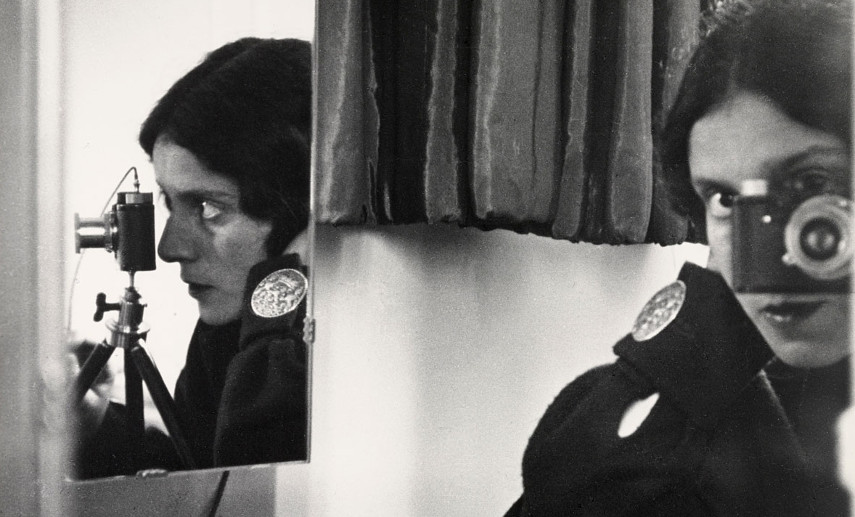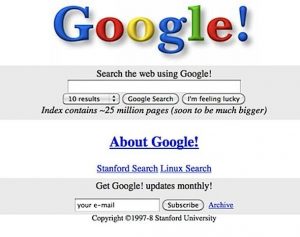At the onset of World War I, few keen-eyed political spectators were surprised or concerned for war. The tensions between European powers had been building for quite some time. Very few, however, thought that the war would be such a bloody and atrocious war. By the end of the global affair, Europe was in ruins, particularly the Germans, who suffered the consequences of massive reparations and massive inflation.1 Disillusionment among the common people was high even by the middle of the war, and women were making a stand for voting rights while they united with pacifists against the war.2 Hannah Hoch was one woman who expressed her desire for equality, and she did so by radical expression through art. The aftermath of World War I was especially a time when art was more than a reflection of societal changes; art served as a plea for change, as a tool for political expression, and as a critique of society and culture. The rapid explosion of political art at the dawn of the twentieth century was felt across the western hemisphere through the works of Diego Rivera and Frida Kahlo, through Pablo Picasso and Wassily Kandinsky, and for a short period of time, through the Dada Movement.
The Dada Movement was a trend in art, literature, and music beginning shortly before the end of World War I. While Dada had no official set of principals by which it operated, the main characteristic of Dada was revolt against the Bourgeois, against tradition, against restrictive government, and against the commonly accepted restrictions of what was or was not art. Dada often encouraged and espoused left-wing ideology, particularly communism and anarchism. The movement came to fruition in Zurich, Switzerland at the Cabaret Voltaire. Hugo Ball, the founder of Cabaret Voltaire, named it after the French philosopher Voltaire who praised rational and scientific thought and condemned irrational superstition. The salon quickly emerged as an epicenter for artists in exile; the emergence of a movement opposed to the bourgeoisie, the status-quo, and what might be called today “The Man,” “big brother,” or “the system,” flowed naturally from a confluence of radical thinkers at the Cabaret Voltaire.3 This movement, though not completely united, emerged as a trend in Berlin around 1916 during the war, particularly out of the leadership of the young woman Hannah Hoch and her lover Raoul Hausmann. Hausmann introduced Hoch to avant-garde art and to the Dada movement in Zurich shortly after her return to Berlin in 1916. Hoch had been serving as a member of the Red Cross throughout 1914, taking a short break from her time at university, which had begun in 1912. Hoch and Hausmann became consumed by the Dada movement, innovating and perfecting a new artistic medium of their own, the photo-montage. Hausmann also created Dada poetry, which, according to the National Gallery of Art, was supposed to offer, “both a metaphor for the destruction caused by war and a commentary on the deceitfulness of language.”4 Here is a video recording of his poem, Fmsbw.
https://www.youtube.com/watch?v=y5vxwhibzfw
Although it may not seem significant by today’s standards, the photo-montage broke the boundaries of classical art. Rather than paint on canvas, Hoch and Hausmann manipulated pieces of photographs to create a new piece of art. Although Hausmann and Hoch were romantic partners and associates in art, Hoch stood out on her own.5 In 1919, one of Hoch’s most famous works was published. It was called “Cut With a Kitchen Knife: Dada Through the Last Weimar Beer-Belly Cultural Epoch of Germany,” and it was featured in 1919 in the First Berlin Dada Exhibition. Viewed closely, a feminist agenda is clear in the photo-montage. At the bottom right corner of the artwork, Hoch placed a cutout of her face in place of her signature; immediately to the right of that cutout is a map of Europe highlighting all of the nation-states that acknowledged women’s voting rights at that time. But Hoch’s artwork addressed more than feminism. The same painting depicts a sort of spectrum of political ideology, with followers of the Dada Movement on the bottom, communist theorists and social scientists in the middle, and German political authorities like Kaiser Wilhelm II at the top right. Near the head of Wilhelm is a script that reads “die anti dada istiche,” or the “the one who is anti-Dada.” Hoch’s work was also promoting the Dadaist movement as a political movement, as an anarchist movement still farther left than communism, and as opposed to the machinery of the German regime. Hoch’s art was displayed again in 1920 at the First International Dada-Fair.

Two years later, Hoch and Hausmann parted ways and Hoch became romantically involved with Dutch writer, Til Burgman, after meeting her on a trip in Italy. Hoch never publicized her lesbian affair. The couple lived at The Hague for three years, and for another six in Berlin until their split in 1938. Although Hoch was called a “cultural Bolshevik” by a Nazi commentator in 1937, and her art was declared “degenerate art” by the Nazi party, Hoch lived and worked in Berlin throughout World War II, and until her death in 1978. Hoch’s work received little historical attention for some time due to her refusal to allow researchers to view her papers during her lifetime. However, upon the sale of her estate after her death, historians have begun to illuminate the story of this fascinating woman.6
- Salem Press Encyclopedia, 2017, s.v. “World War I,” by Robert F. Gorman. ↵
- Helen McCarthy, “Pacifism and Feminism in the Great War,” History Today 65, no. 4 (April 2015): 4–5. ↵
- Carmen Stonge, “Dada Movement Emerges at the Cabaret Voltaire,” Great Events from History: The Twentieth Century (Online Edition) (Salem Press, 2013). ↵
- “DADA – Techniques – Sound,” https://www.nga.gov/exhibitions/2006/dada/techniques/sound.shtm. ↵
- “Höch, Hannah (1889 – 1978),” in Who’s Who in Gay and Lesbian History, edited by Robert Aldrich, and Garry Wotherspoon (New York: Routledge, 2002). ↵
- “Höch, Hannah (1889 – 1978),” in Who’s Who in Gay and Lesbian History, edited by Robert Aldrich, and Garry Wotherspoon (New York: Routledge, 2002); C. Townsend, “Exhibitions: Hannah Hoch,” Art Monthly no. 374 (2014): 20. ↵



41 comments
Elizabeth Santos
I felt increasingly more ecstatic as I read the article! The Dada movement was new to me, but after the depth the article offered about it, I appreciate having read all about it. I admire what this movement represented, as the efforts seeking freedom and speaking out against inequality are values that are especially important today. Additionally, Hoch’s work definitely deserves to be in the limelight.
Cassandra Sanchez
I remember hearing about the Dadas movement briefly in my high school art class but I never really understood what it was really about. I thought it was interesting how Hoch went against the norms of the time and was introduced to and even created very incredible art. She expressed her feelings about what was happening during this time which left an impact on the art community even to this day.
Margaret Maguire
i have never heard of Hannah Hoch or the Dada Movement before and I thought this topic and article were really interesting. Hannah Hoch created the photo-montage, she was one of the first to create art with a photo collage which I think is really cool. Collages are fun to make. The Dada Movement was a period before the end of World War I that was focused around breaking tradition that the government had set up. I enjoyed learning about Hoch and the Dada movement.
Nadia Carrasco
Very inspiring article in my opinion. To me art is a universal language that can be understood in many ways. Although the era of the Dada Movement has ended, I believe that there are still people who use art to display their views. I’m glad I read this article, because it got to think about art in a different aspect. Overall, good article!
Danniella Villarreal
Very well-written article, very informative and there is a lot of new information for me. This artist used her deep, and darkening feelings to create such artwork, which is a very good way to express your inner feelings. Art is a very strong way to send and create a message which is what she tried to do. It is interesting that they also came up with their own different form of poetry to fit the times they were living in.
Christopher Hohman
Nice article. It is always cool when individuals use art to express their views on certain important topics of their day. The Dada movement was very significant as colauges are still a very popular medium of art today. I myself think that they are quite a unique way to document one’s life or adventures. It is cool that they also came up with their own unique brand of poetry to fit the times they were living in.
Sarah Uhlig
I really like how this artist used her deep, and darkening feelings to create such artwork, especially coming from a woman. For this artist to take her inner, deep emotions to the canvas, it took her probably a lot of guts to spill out her darkening self. This article was very well written because we got to read about her dedication and her movement that was driven by her inspiring attitude, she deserved what she earned.
Victoria Salazar
Very inspiring article. I believe that art is the universal language that everyone can love, mourn, rejoice, or protest in. Although the era of the Dada Movement has ended, I feel that there are still forms of it which exist in the sense that people still use art to display their radical views. Although photo-montages are no longer very popular, I am still a big fan of them and loved seeing her work.
Marina Castro
I enjoyed reading this article a lot. I love to read about how art plays an important role in society and in history. Art is meant to change and influence the world for better. Also, the fact that it was a woman who tried to create an impact, makes it even more admirable. Women were not always welcomed with their new ideas and innovations.
Engelbert Madrid
Art is a form of expression that demonstrates the feelings and thoughts of people during the time they are living in. For example, Hannah Hooch illustrated her thoughts and feelings of The Great War, because it was her way of letting the public know how she viewed things during that time. I’m glad I read this article, because art to me is history and culture. Furthermore, the power of art is more than illustrating and being creative. It is about sending a message.